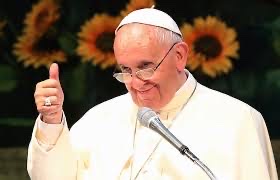The Investiture Controversy - A Church in Crisis
What
The big question during this period was, "Who has the power to appoint bishops, the King or the Church?
The nature and origins of the investiture crisis, its significance for the reform-minded papacy of the time, and how it was ultimately resolved.
The issue of investiture concerned the king’s right to confer upon bishops and abbots the “ring and crosier” that were symbols of their office. The Church,
The Bishops and the abbots were collecting taxes, and this led to an immoral clergy. For instance, they lived openly with
Investiture partially originated in the extreme authority of Henry III. Henry III deposed three rival claimants to the
Four purposes inspired Gregory VII; to complete Leo’s reform of clerical morals, to end lay investiture, to unify all Europe in one church headed by the papacy, and to lead a Christian army to the East to reclaim the Holy Land from the Turks. The reform of clerical morals, which was begun at the Lateran Council of 1059, was met with much resistance. The problem of investiture seemed simpler than that of clerical marriage. At the Lenten Synod of 1075, Gregory issued a decree against lay investiture. Henry IV, however, with over a century of precedents, never doubted his right to make such appointments, and fought Gregory for ten years, literally to the death, in one of the bitter conflicts in medieval history.
Part of the overall significance of investiture was the question, “who should unify and govern Europe, the papacy or the empire?” The German emperors claimed that their power was also divine and necessary for the social order. Privately they resented, long before the reformation, the flow of gold, money, and fees from Germany to Italy. They freely admitted the supremacy of the Church in spiritual
The first step toward this end was the liberation of the papacy from German control. The second was to bring all bishops under the authority of the Papal See. Here is a timeline of these steps:
1073 – Gregory sends a letter to
1074 – General letter sent to French episcopate.
1075 – Synod of Italian Bishops in Rome. Decrees issued against simony, clerical marriage, and lay investiture.
- Five bishops
excommunicated , other bishops suspended and deposed. - Henry defiantly appoints replacements, continues investiture.
1075 (December) – Gregory threatens to excommunicate Henry should he continue.
1076 – Synod of Worms – Henry accuses Pope of wrong-doing, deposition of Pope proposed.
1076 – This deposition, presented to Gregory at a synod in Rome. All the bishops who signed the decree were excommunicated, and the Pope launched upon the Emperor a triple sentence of
1077 – Henry shows up repentant, and presents himself to Gregory at Matilda’s fortified castle at Canossa.
This was a spiritual triumph for Gregory, but a subtle diplomatic victory for Henry, who now automatically regained his throne.
1077 – 1080 – German civil war. Gregory gives his support to Rudolf, excommunicates Henry a second time, and forbade Christians to serve him.
1080 – Council at Mainz called. Henry deposes Gregory. Declares Archbishop Guibert of Ravenna (Clement III, antipope) pope.
- Rival armies meet. Henry is defeated, but Rudolf is killed. Henry recruits another army and seizes a large part of Rome, including St. Peters, and Gregory fled.
1084 – A synod at the Lateran
1085 – Robert Guiscard frees Gregory, sacks Rome, and leaves half of it in ruins. Gregory is taken to Monte Cassino.
- Clement returned to Rome as apparent Pope.
- Gregory held another Synod, excommunicates Henry again, and breaks down in body and spirit. Died
may 25, 1085
Both sides claimed that they had the sole power to appoint bishops and abbots. If Christ had established the Church, it seemed clear that her bishops and abbots should be chosen by churchmen rather than laymen. However, most German bishops were vested by the king with lands, revenues, and secular responsibilities. It appeared just, by feudal law, that they should owe their appointment and allegiance to the king. One problem was that if the bishops were released from their loyalty to the king, half the land in Germany would escape control by the state. Gregory complained that lay appointment was the cause of most of the simony, worldliness, and immorality that had appeared in the German and French episcopates. He felt that the bishops must be brought under the papal authority or the Western Church, like the Eastern Church, would become a subservient arm of the state.
When Henry IV died, Pope Paschal II could not grant a Christian burial to him, an unrepentant excommunicate; but the people of Liege, defying Pope and King, gave Henry IV a royal funeral, and buried him in their cathedral.
Another problem was the Wilbertine schism of 1084-1100
In England, St. Anselm tried to enforce Urban’s decrees at the Council of Rome (1099) excommunicating all who gave or received lay investiture. He himself refused to do homage to Henry 1 (1100) or to consecrate bishops who had received it. In 1105 a compromise was reached
In France, there was an understanding reached between Philip I and
The investiture dispute was finally settled at the Concordant of Worms in 1122, with both parties making concessions. Pope Callixtus II grants that the elections of bishops and abbots may take place in the presence of the
Although the Papacy won a complete victory over the issue of investiture itself, lay rulers retained a varying degree over elections.
Innocent III, a century later, would realize a large part of Gregory’s dream of a world united under the Vicar of Christ; but he would win in a more temperate spirit and with wiser diplomacy.


Comments
Post a Comment